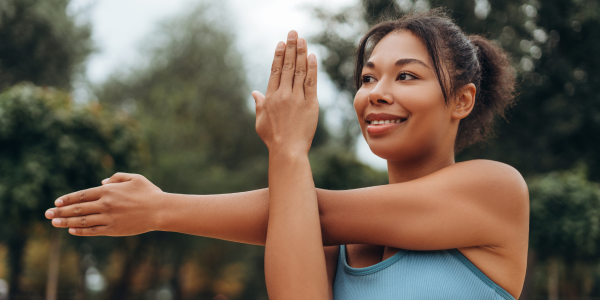
For many people, anxiety isn’t a constant presence – it strikes in specific, high-pressure moments like public speaking, interviews, or important social events. Known as situational anxiety, these episodes can trigger intense physical symptoms that feel overwhelming and out of control.
Enter Propranolol – a beta-blocker commonly prescribed to manage the physical effects of anxiety. While originally developed to treat heart conditions and high blood pressure, Propranolol has become a trusted option for people looking to stay calm and composed during stressful situations.
This guide from e-Surgery will take you through everything you need to know: what Propranolol is, how it works, how it helps with anxiety, possible side effects, lifestyle changes to support your treatment, and what your next steps could be.
What Is Propranolol?
Propranolol is a medication belonging to a group of drugs known as beta blockers. These medications work by blocking the effects of stress hormones, such as adrenaline, on your heart and blood vessels. This action slows your heart rate, reduces the force of your heart’s contractions, and helps lower blood pressure – creating an overall calming effect on the body.
Propranolol was first developed to treat cardiovascular conditions, but over time it has become widely used for non-cardiac conditions, including migraine prevention, tremors, and situational anxiety.
Unlike medications that work on the brain to treat emotional aspects of anxiety (like antidepressants), Propranolol specifically targets the physical symptoms of anxiety – such as a racing heart, shaking, or sweating – making it especially helpful for those experiencing short-term or event-based anxiety.
What Is Situational Anxiety?
Situational anxiety is a short-term, intense form of anxiety that occurs in response to a specific event or setting. While generalised anxiety disorder (GAD) involves ongoing worry about many aspects of life, situational anxiety is event-driven and typically passes once the stressful situation has ended.
The most common triggers or scenarios for situational anxiety includes public speaking or presentations, job interviews, exams or tests, performing on stage, or flying or travelling.

In those moments, the body goes into flight-or-fight mode, releasing adrenaline and other stress hormones. This causes physical symptoms such as:
- rapid heartbeat
- sweating
- trembling or shaky hands
- shortness of breath
- dry mouth
- muscle tension
- blushing or feeling hot
These symptoms are natural – they’re part of your body’s built-in survival system. However, when they become overwhelming, they can interfere with performance, confidence, and quality of life.
Situational anxiety is extremely common, even people who seem confident or outgoing may struggle with anxiety in certain situations. That’s where treatments like Propranolol come in: by easing the physical symptoms, people often feel more in control and better able to manage the mental aspects of anxiety.
How Does Propranolol Help With Situational Anxiety?
While many anxiety treatments focus on the emotion and cognitive side of anxiety – like worry or fear – Propranolol targets the physical symptoms. This makes it especially effective for managing situational anxiety, where the body’s physical reaction is often the most disruptive part. By blocking adrenaline receptors, Propranolol slows your heart rate, lowers blood pressure, and reduces physical signs like shaking, sweating, and breathlessness.
Imagine you’re able to give a presentation. Your heart is pounding, your hands are shaking, and you feel like you can’t catch your breath. These symptoms not only make you feel worse – they also affect your ability to perform. Taking Propranolol 30 minutes to an hour before the event can reduce these symptoms, helping you stay steady, focused, and confident. It doesn’t sedate you or alter your state of mind; instead, it allows your body to remain calm, giving your mind the space to function clearly.
Propranolol won’t “erase” your anxiety, but it removes the physical barrier that often makes anxiety worse. For many, that’s enough to feel significantly more composed and confident in challenging situations.
Side Effects Of Propranolol
Like all medications, Propranolol can cause side effects, although many people experience little to none. That said, it’s important to be aware of potential side effects so you can use the medication safely and know when to seek medical advice.

The common side effects experienced on Propranolol are:
- tiredness
- dizziness or light-headedness, especially when standing up quickly
- cold hands or feet (due to reduced blood flow)
- nausea or stomach upset
- sleep disturbances, including vivid dreams
These are more likely to occur when taking higher doses or using Propranolol regularly rather than occasionally.
Although it is rare, some individuals may experience more serious reactions such as shortness of breath, unusually slow heart rate, swelling in the hands, feet, or face, sudden mood changes, and an allergic reaction. If you notice any of these, seek medical advice immediately.
If you experience side effects that are concerning or persistent, stop taking the medication and speak to your doctor. Adjusting the dose or timing may help with mild side effects, but this should not be done unless you have consulted a medical professional.
Lifestyle Changes
While Propranolol can be highly effective for managing the physical symptoms of situational anxiety, it works best when paired with healthy lifestyle habits and self-care strategies. These changes can reduce your anxiety levels, improve your physical health, and help you feel more in control.
Here are some practical lifestyle changes that can support your anxiety treatment.
- Breathing & Relaxations Techniques: Breathing exercises help slow down your nervous system, counteracting the effects of adrenaline – you can try box breathing, progressive muscle relaxation, or mindfulness meditation
- Regular Exercise: Staying physically active boosts mood-regulating chemicals like endorphins and helps burn off excess adrenaline – even a daily 30-minute walk can make a big difference.
- Limit Caffeine & Alcohol: Caffeine can heighten physical symptoms of anxiety, while alcohol may disrupt sleep and worsen anxiety in the long run.
- Prioritise Sleep: A regular sleep schedule helps regulate your mood and energy; avoid screens late at night and keep your sleep environment quiet and dark to support better rest.
- Prepare & Practice For Stressful Events: Preparation builds confidence – rehearse presentations, visualise success, and use positive self-talk to reduce fear of the unknown.
- Seek Support When Needed: If anxiety becomes persistent or overwhelming, reach out to a GP, therapist, or mental health professional.

Next Steps
If you experience situational anxiety that interferes with your daily life – whether it’s before public speaking, interviews, exams, or other high-pressure moments – Propranolol could be an effective, fast-acting solution. It won’t change your thoughts or emotions, but it can reduce the physical symptoms of anxiety that often make those situations harder than they need to be.
If you have any additional questions or need personalised advice about your treatment options, our team is here to help. e-Surgery offers a free Ask-a-Pharmacist service, where you can get advice from a trained UK healthcare professional. We’re here to help!










